Selecting a Christmas tree and decorating with greenery are popular holiday traditions. Here’s how to have all the fun while ensuring you don’t accidentally spread invasive forest pests.
A light dusting of snow covered the ground as we made the steep climb. My wife and I scanned the hillside for our quarry. We’ve come to this national forest seeking many things over the years: deer, trout, wildflowers, upland birds, rare birds, scenic views.
Today, Forest Service permit in hand, we sought our Christmas. Our Idaho forest is characterized by ponderosa pines; many of the trees surrounding us would not fit the White House let alone our little home. And the smaller trees, while healthy, looked more like Charlie Brown trees than the lush, full firs available at local stores.
But you don’t go to the national forest for the perfect tree. You go to be out in the fresh air, getting rigorous exercise, with the reward being elk and chickadees and Rocky Mountain scenery.
For many of us, finding a Christmas tree is steeped in memory and tradition. As a kid, we’d visit the local tree farm where we could cut our own. My grandparents selected a tree from their own rural property.
Many public lands, like the national forests near me, provide a tree permit for you to find your own on wild lands. A number of Nature Conservancy preserves also allow tree hunting.
Maybe, for you, the tradition is more in putting on the decorations, warm drinks in hand and cheery holiday classics playing.
There are many good environmental reasons to choose a real tree over an artificial one, as my colleague Megan Sheehan writes in her recent excellent story.
But whenever we move trees, firewood or greenery, there is a risk we are transporting forest pests. Non-native, invasive species are substantially altering forests, woodlands and urban greenways in many parts of the country. In fact, one of the most popular Christmas tree species, the Canaan Valley fir, is imperiled in the wild in part because of an invasive pest called the balsam woolly adelgid.
The sad thing is, these pests often receive human help to infest new areas. Fortunately, it’s easy to make sure your Christmas tree traditions and holiday greenery decorations are not contributing to the spread.
Here are tips from my friends at Don’t Move Firewood to ensure you are minimizing the risk of invasive species.
-
Go Local

Finding a local Christmas tree. Photo © The Nature Conservancy (L.Greenwood) The farther you transport a tree, the more likely you could be introducing a brand-new pest to your neighborhood. If you decide to go tree hunting in the wild (with proper permits), aim for within 10 or 20 miles of your home. Permits are inexpensive, and it can be a fun family outing. Get an extra permit, and check with local charities to see if they need trees for local families.
-
Buy Local, from a Reputable Vendor
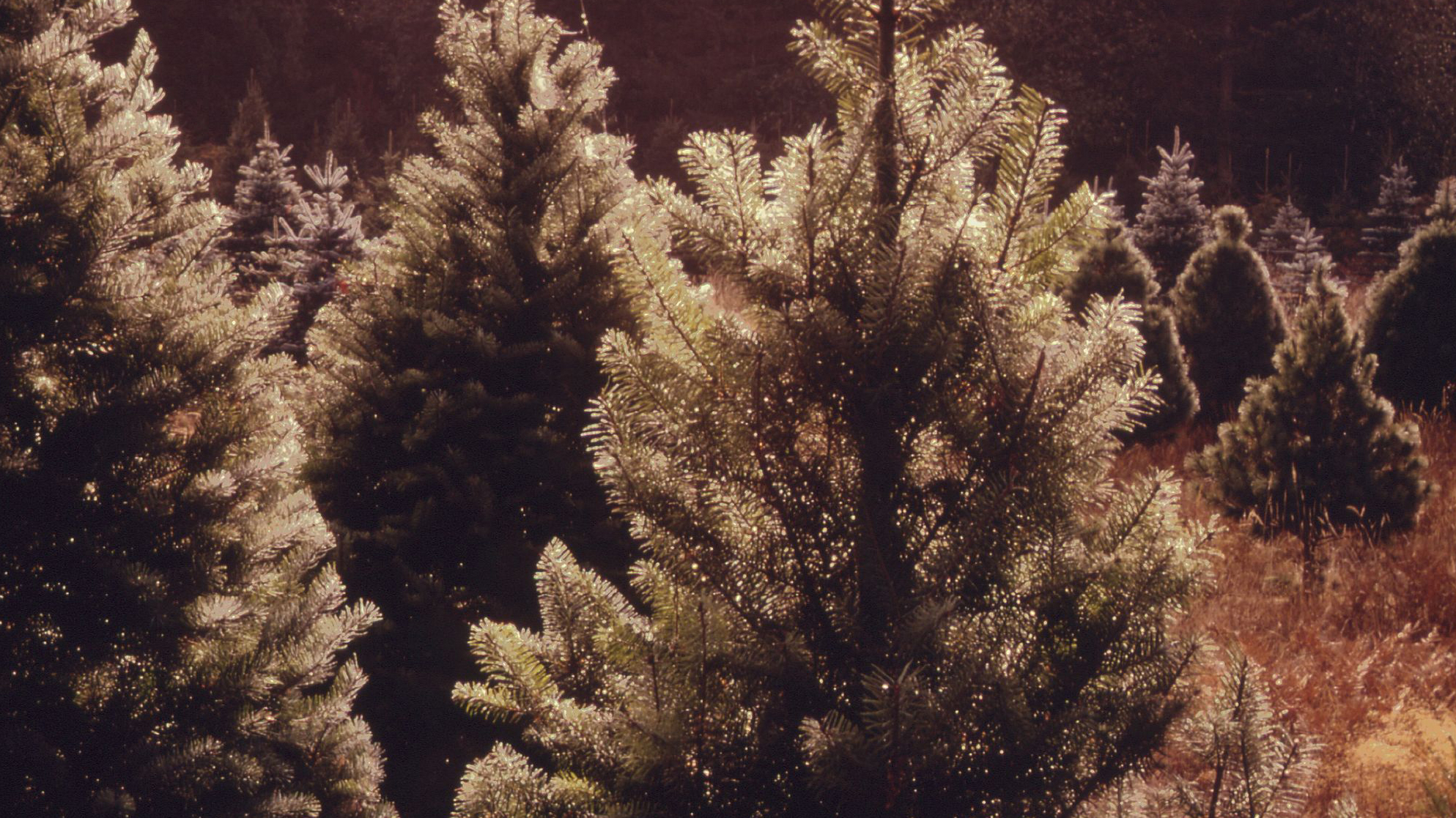
Closeup of a group of Christmas trees on a local tree farm. Photo from the National Archives and Records Administration in the Public Domain There are many options to buy quality trees locally. Choose wisely. A visit to a local tree farm can be a fun outing, as many also have family activities and a festive atmosphere. Tree farms also have many benefits for land conservation and in fighting climate change.
If you buy from a pre-cut tree from a store, make sure it is an established, reputable vendor. “Fly by night” tree sellers set up alongside a road are less likely to comply with state or federal regulations.
-
Pick a Healthy Tree
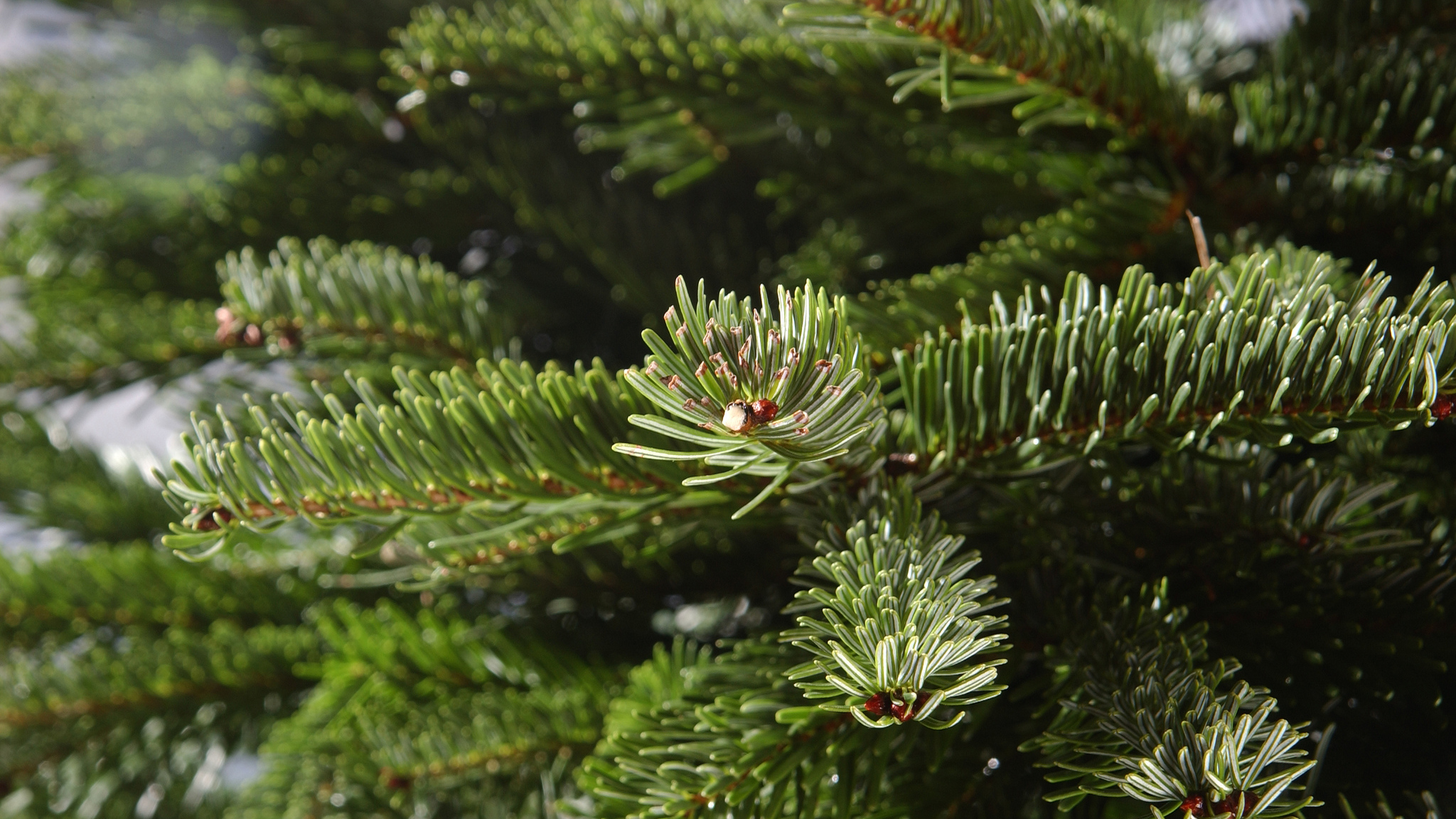
A healthy tree. Photo © Lynn Ketchum for Oregon State University / Flickr through a Creative Commons license I recall my mother giving potential Christmas trees a thorough exam before purchasing. Turns out, she was doing the environmentally responsible thing. You don’t want a brown tree that’s shedding needles, do you? Those trees aren’t just a fire hazard; they may also be harboring diseases. Pick a tree with perky, bright-green needles and springy, soft branches.
-
Make Your Own Wreathes and Displays from Local Plants
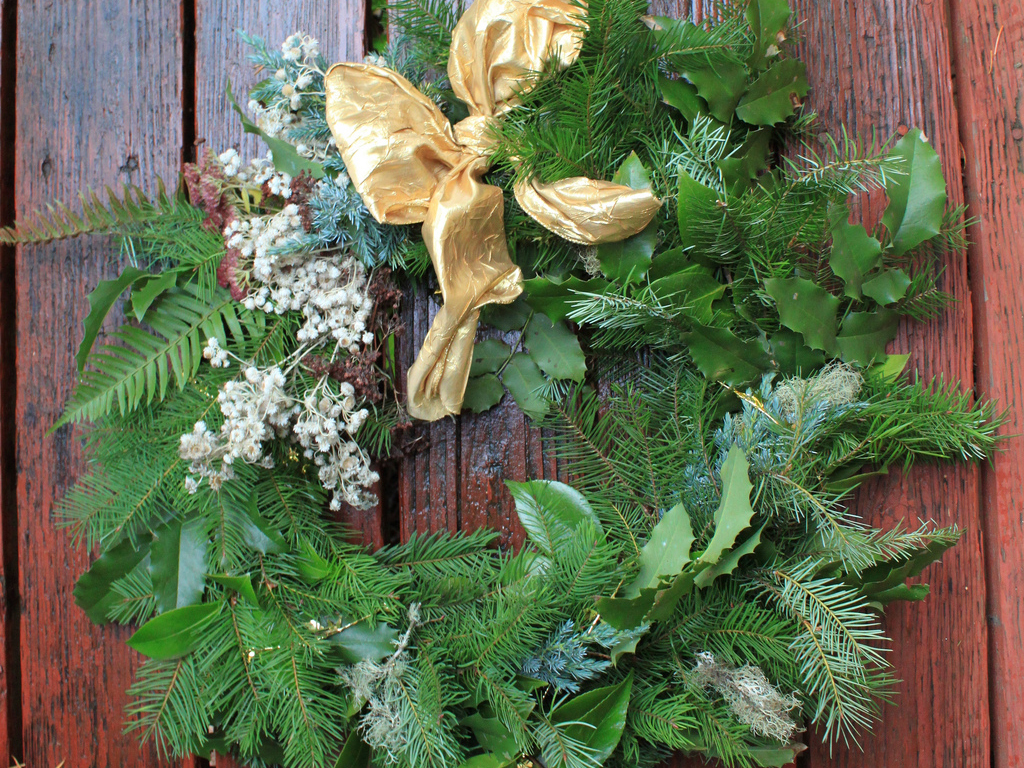
The wreath was made in with Douglas fir and blue juniper. Photo © Linda McMahan for Oregon State University / Flickr through a Creative Commons license There are many resources on Instagram and craft sites with ideas for making your own beautiful wreathes and holiday displays. You can use local plants (following all applicable regulations, of course) to create your decorations.
A bowl of pine cones with cinnamon sticks makes a free and attractive centerpiece. Extra-branches from your Christmas tree can be fashioned into a nice door display or even an elaborate wreath. Be creative.
-
But Don’t Use Invasive Species in Your Wreaths
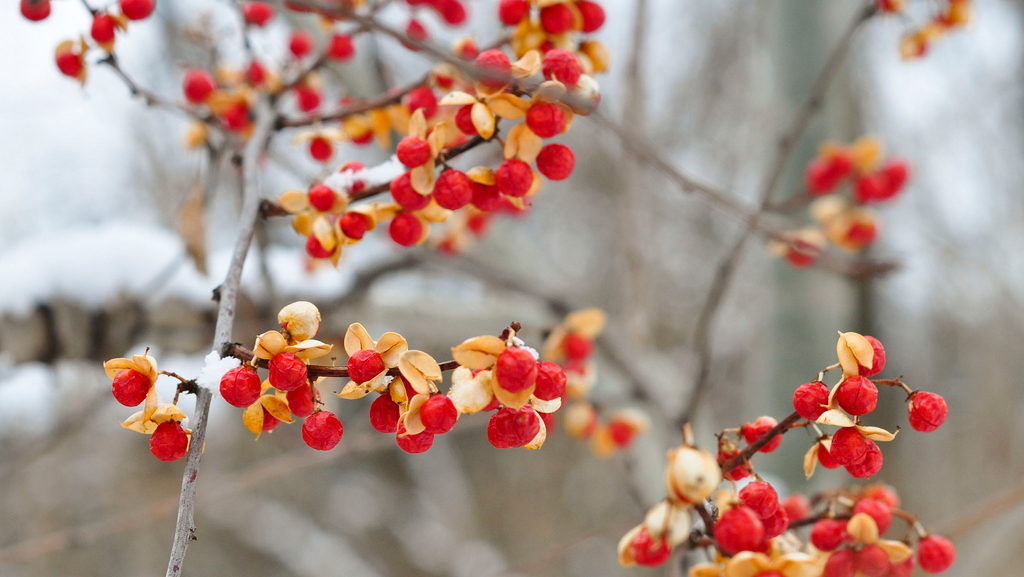
Asian bittersweet (Celastrus orbiculatus). Photo © Esteve Conaway / Flickr through a Creative Commons license When you’re selecting plants to use in your holiday displays, make sure they’re not invasive. Multiflora rose and Asian bittersweet might be abundant and colorful, but they are also nasty invasives that out-compete native plants. Don’t risk spreading them by putting them in your displays. There are many resources that list and identify invasive plants in your area.
-
Buy Wreaths, Garlands and Other Holiday Decorations from Established Vendors
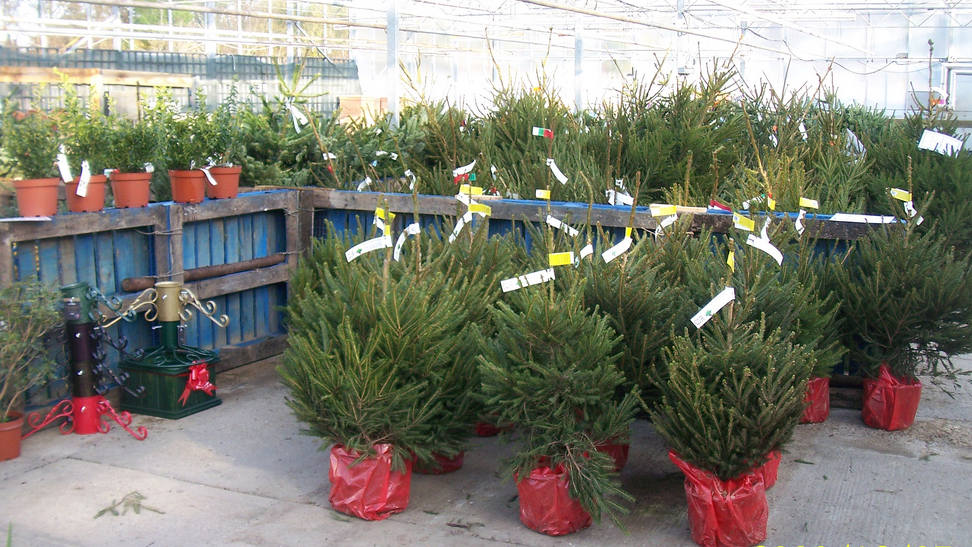
Christmas trees at a nursery. Photo © Leonora (Ellie) Enking / Flickr through a Creative Commons license A lot of folks buy wreaths online. That’s fine – just buy from established companies. Avoid “great deals” on eBay and Craigslist from unknown people. Established, reputable companies have to comply with regulations and quarantines designed to stop the spread of invasive pests. A random person selling a wreath on eBay may not.
-
Dispose of Your Tree and Wreath Properly

Photo © The Nature Conservancy (L.Greenwood) It might be tempting to put your tree in the backyard or in a brush pile to help wildlife. Don’t do this. If your tree does contain invasive species, you are introducing them to the neighborhood. Many communities now recycle trees, and that’s the best option. Otherwise, dispose of your tree at a municipal compost facility or in the regular trash.
-
Bookmark Don’t Move Firewood
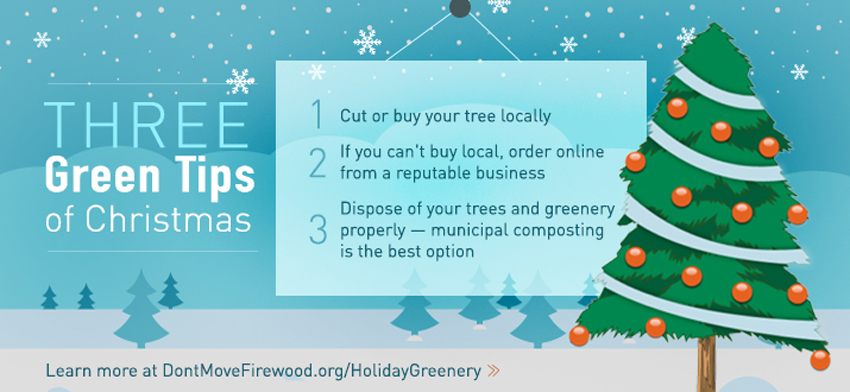
Three Green Tips of Christmas. Image © Don’t Move Firewood The Don’t Move Firewood site is an incredible resource educating you on how to stop forest pests. It is full of useful information on forest pests, including identification and tips on how you can stop their spread. It features infographics, entertaining films and fun activities to help spread the word on invasive species. Whether you want Christmas tree tips, information on how to save your street’s elm trees or want to identify an insect you found on your tree, Don’t Move Firewood is an indispensable resource.
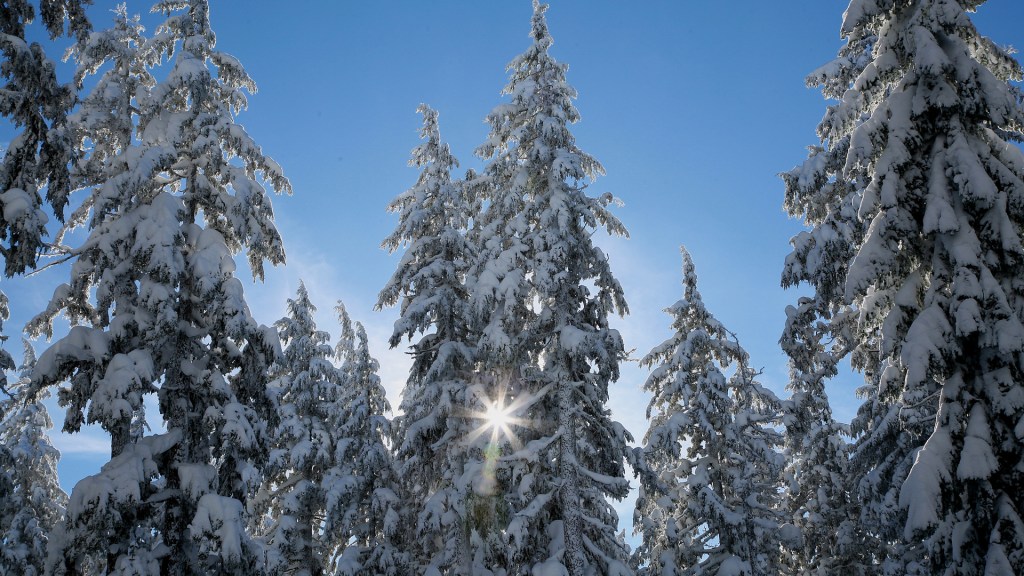



I chose not to use either a real tree or n artificial one. While I find them beautiful, they are an extra expense, true artificial tress are not bought every year, but they bring their on risks. I am a pet parent, my small pets are adept at eating strange things. Decorations are dangerous when swallowed, also real or fake pine needles cause internal damage when swallowed . The heartache of a sick pet and the ensuing bills are something I happily do without as much as possible. I stick with a small naciemento, a recreation of the town of Bethlehem and Advent candles I light each night of Advent until January 6th to celebrate Christmas. The trees can live on.
Never thought about what living organism I might be bringing in on my Christmas tree….
Stop…such invasive wealth of problems to buy a seasonal purchase of a tree and what the outcome will be into the next mellinium….for gods sake wake up to what you are talking about for a week or so of simple joy to just have a green aromatic tree in your place….stop with all this nonsense and grow up !!